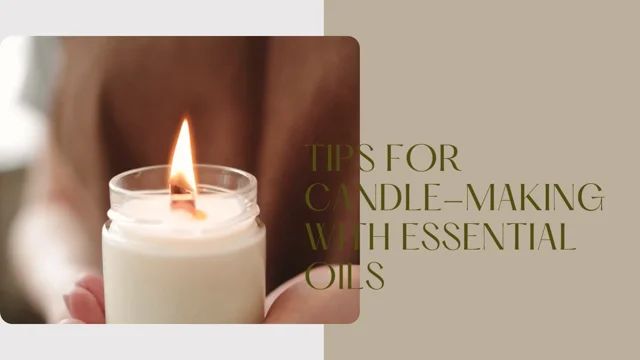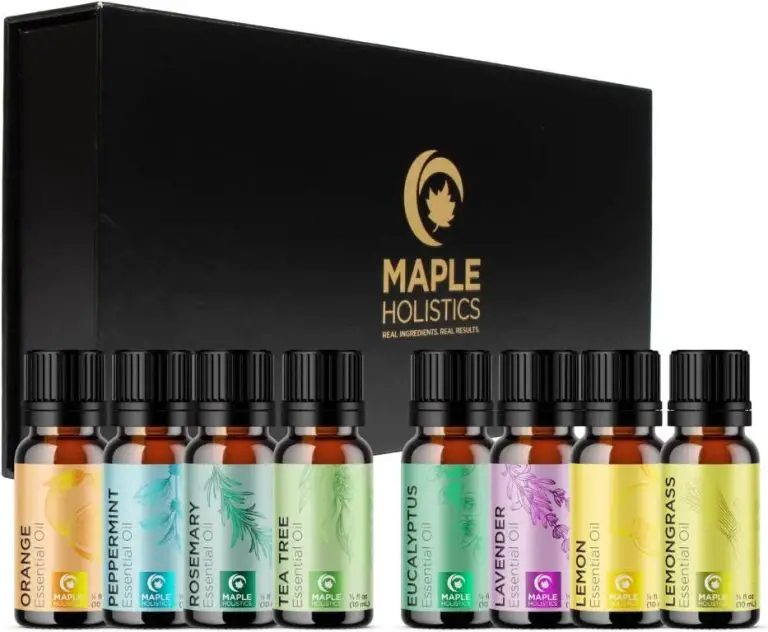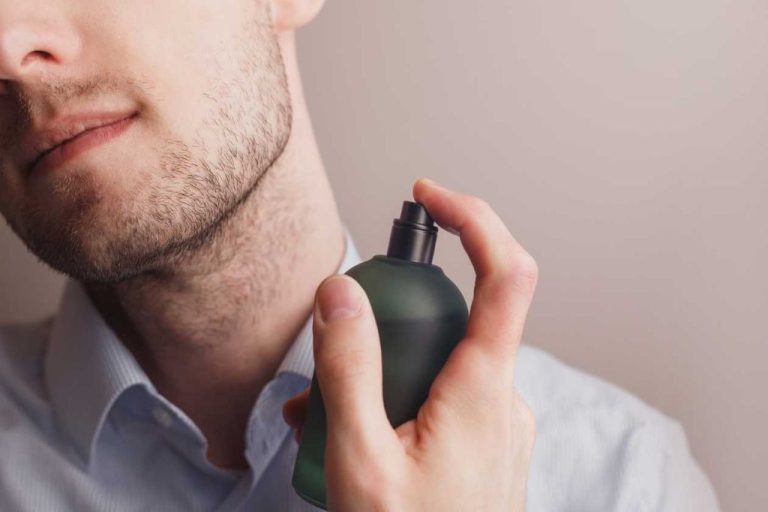Can I Use Aromatherapy Oils In Candles?
Aromatherapy uses essential oils extracted from plants to promote wellness and relaxation. Essential oils like lavender, eucalyptus, and tea tree can provide therapeutic benefits through inhalation and absorption by the skin (1). Candles are a popular method of diffusing essential oils by heating them to disperse the aroma into the air. Candle making involves adding dyes, scents, and other ingredients to wax which is poured into containers and burned with a wick.
Many candle makers are now incorporating essential oils to create aromatherapy candles that provide both ambient lighting and a soothing aroma. The essential oils add natural fragrance and can provide the benefits associated with aromatherapy. This guide will explore how to properly use essential oils in different candle making techniques for safe and effective candles.
(1) https://www.candlescience.com/essential-oil/all-candle-essential-oils/
Benefits of Using Essential Oils in Candles
Using essential oils in candles provides a variety of benefits. One of the main benefits is aromatherapy. Essential oils contain powerful aromatic compounds that have therapeutic effects when inhaled. Research has shown that scents from essential oils can help promote relaxation, relieve anxiety and stress, boost mood and energy, and even help with sleep and congestion (source). The essential oils from your scented candle can provide these same aromatherapy benefits as you enjoy the candlelight and fragrance.
Essential oils also allow you to make your candle more fragrant than candles made with synthetic fragrances. Many essential oils have strong scents that will emit a more potent aroma from your candle. Certain essential oils like lemon, peppermint, and eucalyptus are especially vibrant. Using essential oils is a great way to create a candle with a richer, more natural scent.
Additionally, essential oils give you the ability to fully customize the scent of your candle. With a wide variety of essential oils to choose from, you can create signature scents that reflect your personal preferences. Essential oil blends also allow you to layer fragrances and craft complex aromas for your candle. Whether you prefer fruity, floral, spicy, or woodsy scents, essential oils make it easy to craft a candle with your ideal fragrance.
How to Choose Oils for Candles
When selecting essential oils for candle making, it’s important to consider the intensity of the scent and how the oils will burn. Some oils like citrus tend to burn off quickly, while others like clove and cinnamon are very strong and can be overpowering in candles. It’s best to avoid irritating or potentially toxic oils like wintergreen, birch, and pennyroyal when burned (1). Instead, opt for gentler oils like lavender, eucalyptus, and tea tree if you want to experience aromatherapy benefits.

The National Candle Association recommends using .5 to 1 ounce of fragrance oil per pound of wax or 1-2% essential oil per pound of wax (2). Start with lower concentrations and test different oil amounts to find the right scent throw for your needs. Essential oils with med-light scents like grapefruit, lemon, or bergamot make good starters. If you want a bolder aroma, use oils like peppermint, rosemary, or pine in moderation.
Ultimately, the oils you choose will depend on the benefits you want to experience. Stimulating scents to boost energy, relaxing floral scents to reduce stress, or antimicrobial oils to purify the air. Just be mindful of intensity so the scent isn’t overwhelming when burned.
Sources:
(1) https://www.candlescience.com/learning/essential-oil-safety
(2) https://www.thesprucecrafts.com/standard-fragrance-loads-for-candles-4159765
Usage and Safety Precautions
When using essential oils in candles, it’s important to take proper safety precautions. Only use oils meant for aromatherapy, as these are the highest quality and safest for burning. According to Green America, essential oils can become toxic when heated, so you’ll want to stick to usage recommendations.
Most experts recommend using no more than 1% essential oil per ounce of wax. Going above 3-5% can lead to safety issues like sootiness and reduced burn time. Be sure to follow manufacturer guidelines and don’t overdo it with the oils (Green America, https://www.greenamerica.org/toxic-candles).
It’s also wise to provide warning labels about keeping candles away from children and pets and trimming wicks to 1⁄4 inch before each burn. Properly labeling candles will let users know to take precautions and enjoy your aromatic creations safely.
Adding Oils to Wax, Soy, and Paraffin Candles
When making candles with wax, soy, or paraffin, it’s important to add the essential oils to the melted wax before pouring the candle. The wax should be cooled to around 160°F before adding the oils according to this source. You’ll want to stir the oils into the melted wax for 1-2 minutes, being careful not to stir too quickly to avoid bubbles in the wax. Use candle dyes that are safe to use with essential oils.
Properly cooling the wax before adding the oils is crucial – if the wax is too hot, the volatile compounds in essential oils can evaporate. And if the wax is too cool, the oils may not incorporate properly. Following the proper temperature guidelines helps the oils bind effectively with the wax to maximize fragrance throw. This allows the aroma of the essential oils to fully permeate the melted wax so the scent shines when burning the finished candle.
Making Gel Candles with Essential Oils
Gel wax is a great choice for candles containing essential oils because it holds fragrance better than paraffin wax. Gel wax is formulated to have more oil than paraffin, allowing it to retain scent longer when essential oils are added (Bulk Apothecary, https://www.bulkapothecary.com/gel-candle-fragrance-oils-1/). For jar candles, look for a skin-safe gel made specifically for candles that won’t irritate skin if spilled.
When making your own gel candles with essential oils, take care not to get any oils on the wick, as this can clog the wick and prevent proper burning. Use toothpicks or skewers when adding oils to avoid this. Only add essential oils once the wax has cooled below 185°F to avoid evaporating the oils. Follow usage rates provided by the wax manufacturer, usually around 1 oz of fragrance oil per 1 lb of wax (Candles and Supplies, https://www.candlesandsupplies.com/fragrance-oils/Candle-Gel-Compatible).
Making Natural Beeswax Candles
Beeswax is an excellent natural wax for candles, as it holds scent very well without any added chemicals or stabilizers. The natural honey scent of beeswax also complements many essential oils. When making beeswax candles, it’s best to use 100% cotton wicks, which burn cleanly through the wax.
To add essential oils to beeswax candles, first melt the beeswax completely. Then allow the wax to cool slightly, until it has thickened to a syrup consistency. Adding the oils at this stage allows proper dispersion throughout the wax. According to BeehiveCandles.com, adding oils directly to hot liquid wax can cause the beneficial properties to evaporate. The optimal temperature for adding essential oils is 135-165°F.
Use caution when adding oils, as a little goes a long way in beeswax. Start with .5 to 1 ounce of essential oils per 1 pound of beeswax. You can add more as desired for a stronger scent. Stir thoroughly to fully incorporate the oils. Then pour into containers and allow to fully cool before burning.
Container and Wick Considerations
When making candles with essential oils, it’s important to choose the right container and wick to ensure proper burning. Here are some key considerations:
Match the wick size to the diameter of the candle. Thicker candles need wider wicks that won’t drown in wax and will burn properly. Consult a wick sizing chart to select the right width. https://www.candlescience.com/essential-oil/all-candle-essential-oils/
Use heat-safe containers made of glass, metal, or heat-resistant plastics. Avoid plastic containers not meant for high heat as they can melt. Glass jars or tins work well.
Consider the viscosity of the essential oils when selecting a wick. Oils like eucalyptus and peppermint are thin and require a smaller wick. Thicker oils like sandalwood and patchouli work better with a larger wick.
Testing different wick sizes to find the best burn for your particular candle recipe is recommended. Proper wicking helps the candle burn evenly and prevents tunneling.
Storing and Burning Essential Oil Candles
Properly storing and burning essential oil candles is important for safety and maximizing scent. Here are some tips:
Store candles in a cool, dark place when not in use. Light, heat, and air exposure can cause the essential oils to lose their potency more quickly. Keeping candles tightly covered in a drawer or closet helps preserve the aroma. According to this source, essential oils can evaporate from candles over time.
Never leave burning candles unattended. Stay in the same room and keep an eye on the flame. Blow out the candle if you need to leave the area. Unattended candles are a fire hazard.
Keep burning candles out of reach of children and pets. Little hands can knock over candles and curious pets may get too close. Place candles up high or in an enclosed holder for safety.
Conclusion
Adding essential oils to candles can provide many benefits beyond just fragrance. The aromatherapeutic properties of essential oils can be released into the air while the candle burns, providing mental and physical effects. When using essential oils in candles, be sure to follow proper usage and safety precautions. Only use oils that are safe for burning, test for scent throw, and follow usage rates carefully. Avoid pouring hot wax too high above the container to prevent losing volatile compounds in the oils. With the right oils and proper practices, it’s easy to make therapeutic aromatherapy candles at home.
In summary, essential oils can add therapeutic benefits in addition to fragrance when used in candles. But be sure to choose candle-safe oils at the right usage rates for your wax type. Follow all safety precautions during the candle making process. With some care and testing, essential oil candles can provide beautiful scents and aromatherapy effects.




